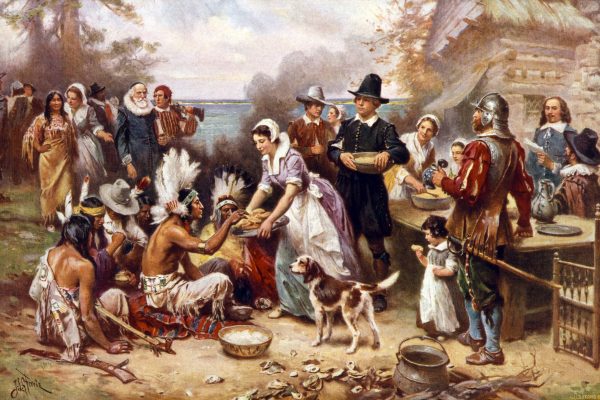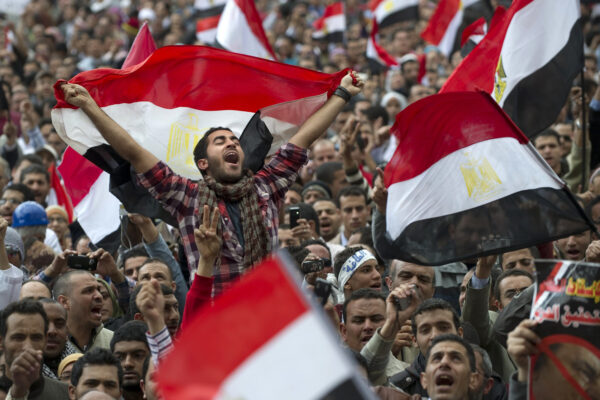This is the story of an ancient city by the banks of the Ravi, made for conquerors, scholars, artists and mystics alike.
This is the story of an ancient city by the banks of the Ravi, made for conquerors, scholars, artists and mystics alike.
The distant history of Lahore, now Pakistan’s second-largest city, is very obscure. Some say that it was founded by and named after Lava (or Loh), the son of Rama and Sita in the ancient Hindu epic Ramayana. There is some speculation that the modern name Lahore is derived from Lohawar (similar to nearby Peshawar), which means “The Fort of Loh.” Even today, inside the Lahore Fort there is a vacated Hindu temple dedicated to Lava.
Whatever its origins may be, Lahore has always been located on the left bank of the Ravi, the smallest of Punjab’s five rivers. For centuries, the people of Lahore have been able to use the river as a natural defence against invaders from the north (though it didn’t always work, as we’ll see!). The cool breeze from Kashmir in the north was cooled as it passed over the Ravi before it came to Lahore, providing some relief during the hot summer. The Ravi swelled in the summer to spread a thick layer of fertile clay in the area.
Lahore was ruled by Hindu (Brahmin) dynasties and culturally influenced by Buddhism prior to the arrival of Muslims, but it remained a relatively unimportant city in the region. Multan, to the south, was far more important. And so in 665 CE, just 32 years after Prophet Muhammad (s) passed away in Arabia, a military expedition under the Umayyad general Muhallab ibn Abi Sufrah passed through Kabul, Peshawar, and Lahore on its way to Multan. These were probably the first Muslims to ever see Lahore.
Muslims really made an impact in the region half a century later with Muhammad ibn Qasim’s conquest of Sindh in 711 CE. However, the decline of the Umayyads had already begun and the Muslim expansion came to a halt with Lahore just outside of its reach. In 982 CE, an anonymous Persian writer published a geography book (Hudud al-‘Alam) with a detailed description of Lahore as a small city with “impressive temples, large markets and huge orchards”.
At the time when this description was being written, important changes were happening in the Abbasid Empire that would forever change Lahore’s place in the Muslim world. At an unknown date in the early 11th century, a Turkic Muslim of Ghazna named Mahmud (d. 1030) conquered Lahore and established a garrison there, making it the first major Muslim settlement in northern India. The Ghaznavids’ territory in Iran was soon taken over by the Seljuks, but they held on firmly to Lahore.
Mahmud was not only sought to legitimize his rule as a devout Sunni Muslim but also to patronize Persian culture. He, therefore, invited many Persian learned men to come work and settle in Lahore and the surrounding area. One outstanding example is that of al-Biruni (d. 1048): not only did he use his stay in Lahore as an opportunity to learn the Sanskrit language and write about Hindu religion and culture, but it was also here that he used trigonometric functions to accurately estimate the circumference of the earth.
Others who came to Lahore later on were the poet Mas’udi Salman (d. 1121), who helped spread the use of Farsi (Persian) in the region, and Hujwiri (d. 1077), a scholar who wrote a famous history of the Sufism (and the first treatise of Sufism ever written in Farsi). However, Ghaznavid power was by now declining, and in 1163 they lost Ghazna itself to the Seljuks, forcing them to move their capital to Lahore: the very first Indian-based Muslim state.
In 1186, Lahore was overrun by the Ghurids, another Turkic Muslim dynasty. Especially under leaders such as Qutb ad-Din Aybak and his son Iltutmish (d. 1236), The Ghurids used Lahore as a base for their invasions further into India. They soon established their rule across the Punjab and slowly made their way all the way to Bengal, making Delhi their capital. Lahore was thus ruled by the various dynasties of the Delhi Sultanate, though the local governors often held the real authority.
In 1241, Lahore was sacked by the Mongols. They moved on from the city but returned again in 1253 to install a governor of their choice. The Mongols and the Muslim dynasties in Delhi constantly fought back-and-forth over Lahore. It was during this period of turmoil (in c. 1333) that the famous Moroccan traveller Ibn Battuta passed through the region on his way to visit Sultan Muhammad ibn Tughluq, who was inspired by the Syrian scholar and reformer Ibn Taymiyyah to valiantly resist the Mongols’ occupation of Lahore.
In 1398, Lahore submitted to Timur (Tamerlane) before he could invade and ravage it. Timur invaded all the way up to Delhi and then left the region for campaigns elsewhere, but he left his own men in-charge of Lahore. The descendants of one of these men, who by now ruled from Delhi, gave Lahore away to the Afghan Lodhi dynasty in 1441. The Lodhis loosely ruled Lahore for nearly another century, when they lost it (in 1520) to a descendant of Timur trying to revive his family’s legacy: Zahir ad-Din Babur. As it turned out, taking Lahore was Babur’s first step in creating the soon-to-be magnificent Mughal Empire.
At this point, Lahore had been under Muslim rule for nearly 500 years. However, it remained as it had always been: a city at the crossroads for travellers, traders, invaders, scholars, and mystics. Life rarely changed for its Muslim and Hindu inhabitants as the authority over the city was tossed around. It would flourish under the Mughal dynasty, who raised its importance to such a degree that it was here the movement to create a Pakistan officially began in March 1940.
By the 1520s, it was understood by Central Asian invaders of northern India that Lahore was the city they had to conquer if they wanted to move further through the Punjab toward Delhi. The first Mughal emperor, Zahir ad-Din Babur, conquered Lahore in 1524, consolidating his rule there before moving deeper into the subcontinent. As long as they held their stronghold at Lahore, Babur and his descendants – the Mughals – would rule northern India as one of history’s most powerful dynasties.
When Babur’s son and successor Humayun faced a rebellion led by Sher Shah Suri, an Afghan leader, Humayun fled to Lahore for refuge. However, he was not safe here, because Suri also realized the importance of having Lahore in his own hands; his forces conquered the city in 1540, forcing Humayun to flee to the court of the Safavid emperor Shah Tahmasp I in Iran. In 1555, Humayun returned to Lahore, leading a Persian army borrowed from the Safavids, and re-conquered it for the Mughals.
It was during the reign of Humayun’s son, Jalal ad-Din Akbar, that Lahore really took centre-stage in the revived Mughal Empire. In 1585, Akbar made Lahore his capital. He then started to conquer and consolidate his rule in the surrounding area, including much of Afghanistan, Ladakh, Kashmir, and Sindh. During this time, Akbar renovated one of Lahore’s oldest and most iconic monuments, the Lahore Fort. Lahore remained the capital of the Mughals until 1599 when it was replaced by Akbar with Agra.
It had been in Lahore, in 1595, that Akbar had received Jesuit (Christian) missionaries from Portugal at his court. These missionaries established a permanent presence here, and under the rule of Akbar’s son Jahangir, Lahore’s first church was built. Jahangir kept Lahore as his capital for much of his reign, as did his son Shah Jahan. At his death, Jahangir was buried in Lahore’s Shahdara Bagh, next to his beloved consort Nur Jahan.
Shah Jahan may be most famous for building the Taj Mahal in Agra, but he had been born in Lahore and dedicated much of his attention to the city. Some of his initiatives here involved renovating several key buildings, creating the city’s famous Shalimar Gardens, and establishing a carpet-making industry there. Like his father Jahangir, and later his son Aurangzeb, Shah Jahan faced a Lahore-based rebellion that the Mughal forces made sure to put down. Lahore was one city they did not want to lose.
Shah Jahan’s son Aurangzeb was the last Mughal ruler to really leave his mark on Lahore. A devout Muslim, he was responsible for the construction of the Badshahi Masjid, which was the largest mosque in the world when completed in 1673 and has become one of the most iconic mosques in history. However, Lahore’s golden days under Mughal rule were already coming to an end. Aurangzeb’s attention for most of his long reign was focused elsewhere, and throughout the 18th century, Lahore was tossed around between the Sikh tribes of the Punjab and the Afghans under the leadership of Ahmad Shah Durrani and his descendants.
In 1799, one of the Sikh tribal chiefs, Ranjit Singh, finally struck a deal with the Afghans in which they allowed him to keep Lahore. Maharaja Ranjit, as he came to be known, expanded his empire outward from Lahore but carefully kept a tight grip on the city. He repaired Lahore’s outer walls and commissioned renovations inside the city. His successor, Dalip Singh, had to deal with a new force in the region: the British. The Sikhs were defeated in the Anglo-Sikh Wars and, in March 1849, Lahore fell into British hands.
Compared to the rest of its history, Lahore was an uneventful place between 1849 and the so-called Indian Mutiny in 1857, which finally brought a complete end to the Mughal Empire. In the decades that followed, however, it re-emerged not just as a hub for Punjabi culture (and north Indian culture more broadly) but also as a site for anti-British political activity. It was in Lahore that the socialist revolutionary Bhagat Singh was jailed for calling for complete independence from British rule, and here he and his comrades put on a defiant 116-day hunger strike before they were hanged in 1931.
Bhagat Singh’s movement put the pressure on other leaders of the independence movement, such as Nehru and Jinnah, to demand complete independence instead of their earlier request for dominion status. At a public conference held in Lahore in 1929, these leaders unfurled India’s modern tricoloured flag and openly declared that they would accept nothing short of complete independence.
It was also in Lahore where, in March 1940, the Lahore Resolution was presented, calling for the creation of separate states for the subcontinent’s Hindus and Muslims. In 1947, this led to the creation of Pakistan (and later Bangladesh) and India. One of the most active supporters of the Lahore Resolution was Lahore-based Allama Muhammad Iqbal, one of the leading Muslim poets and thinkers of the 20th century. The Minar-e-Pakistan, a 60-metre tall monument shaped like a minaret, was later built in Lahore at the site where the Lahore Resolution was first proposed.
The division of the Indian subcontinent in 1947 is known as the Partition, an event that turned into a tragedy as millions of Hindus, Muslims, and Sikhs perished as they tried to get to “the right side of the border.” Both the Hindus and Sikhs who left Lahore, and the Muslims who arrived there, were firsthand witnesses to this, as Punjab was vigorously sought by both Pakistan and India. The British mapmakers’ solution to this was to give Lahore, the cultural centre of Punjab, to Pakistan, and give nearby Amritsar, the religious centre for Punjabi Sikhs, to India.
In addition to Allama Iqbal, modern Lahore has also produced or been home to some of South Asia’s greatest scholars, thinkers, and poets. The long list includes the English novelist Rudyard Kipling, the Urdu poet and Lenin Peace Prize recipient Faiz Ahmad Faiz, and the religious scholars Allama Mashriqi and Dr Israr Ahmad. Nusrat Fateh Ali Khan, the world-renowned master of qawwali, and the popular cricketer, philanthropist, and politician Imran Khan both spent much of their lives in this historic city as well.
On February 22, 1974, 39 heads of state of Muslim-majority countries prayed together inside the Badshahi Masjid in Lahore. The list included Pakistan’s own Zulfiqar Ali Bhutto, who pioneered Pakistan’s nuclear program; King Faisal of Saudi Arabia, in whose honour the nearby city of Lyallpur was renamed Faisalabad; Muammar Gaddafi, after whom Lahore’s famous Gaddafi Stadium (host of the 1996 Cricket World Cup finals) was named; and Yasser Arafat of the Palestinian Liberation Organization (PLO).
This is the story of an ancient city that remains today, as it has for thousands of years, a crossroads by the banks of the Ravi for conquerors, scholars, artists, mystics, and just about anyone else who has passed through it. No wonder the local Punjabi saying goes, “if you haven’t seen Lahore, you have yet to be born.”
References:
- Jackson, P.; Andrews, P.A. “Lāhawr.” Encyclopaedia of Islam, Second Edition. Edited by: P. Bearman, Th. Bianquis, C.E. Bosworth, E. van Donzel, W.P. Heinrichs. Brill Online, 2016.
- Avari, Burjor. Islamic Civilization in South Asia: A History of Muslim Power and Presence in the Indian Subcontinent. New York, NY: Routledge Press, 2013.





